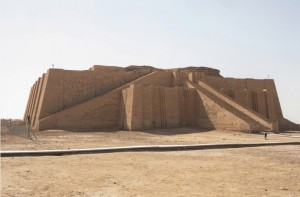Technological development has been the driving force behind human evolution for Millennia. However, we do now have an over-reliance on it in many situations. One of them is cooling buildings. A lot of them rely on energy consuming air conditioning. But, that is bad for the environment and won’t work if there are power cuts. Are there alternatives? Surprisingly, we can look back at how people did things in the past for inspiration. Then, if you need help from a top architect in London, you can ask us.
Sumerians
 Some of the most interesting ideas are actually among the oldest. The Sumerians were from southern Mesopotamia, a region that is in Iraq. It is actually thought to be one of the cradles of civilisation. They could date as far back as 5500 BCE.
Some of the most interesting ideas are actually among the oldest. The Sumerians were from southern Mesopotamia, a region that is in Iraq. It is actually thought to be one of the cradles of civilisation. They could date as far back as 5500 BCE.
Sumer was a very hot and dry region. As a result, they had to develop different ways to deal with the heat and make buildings habitable. One thing they did was to build with thick walls to keep heat out. Windows were also small to reduce the amount of hot air getting into buildings. Notably, they chose materials that would actually absorb heat in the day and release it later. So, it would help with cooling in warm days but warm the buildings on colder nights.
Another thing the Sumerians did was build properties close together. The idea here was to ensure fewer walls were absorbing solar heat. Streets were narrow too, ensuring there was plenty of shade for people who had to move around.
Egyptians
Egypt is another hot, dry area. As a result, ancient Egyptians had to find ways to keep buildings cool. They also chose materials to keep the heat out. Larger buildings like palaces were solid stone. Smaller homes were mud bricks.
The most interesting ancient Egyptian technique though is the mulqaf. The idea is to have a tall wall facing the wind with openings at the top. It would capture the wind and funnel it down into the building to cool it. The technique ensures much better air circulation, making homes more comfortable.
The mulqaf idea is still popular in the Middle East and parts of Asia. In fact, some even scale it up to create elaborate wind towers. They can effectively capture the wind and provide natural cooling. If you want to look at the same sort of idea, ask us and work with a creative architect in London.
Puebloans
You can find hot, dry climates on various continents. The Puebloans are from the Southwest US, especially New Mexico and Arizona. Interestingly they also chose some similar solutions to deal with heat, including using materials to absorb heat, small windows, and sharing walls.
The most interesting thing here is the Puebloans had a great understanding of the importance of orientation. They knew the benefit of orienting buildings so they weren’t in the sun during the hottest summer days but would get more light and solar heat in winter. They would build under the overhang of south facing cliffs. Descendants still use the strategy in the region today.
Do you want help from an architect in London?
Coffey Architects can help clients to create incredible buildings. We can look at a number of different things, including natural ventilation, orientation, and material selection. This can lead to properties that are more comfortable, especially in hotter periods, without needing to rely on air conditioning.
So, if you want some help from a top architect in London, come to us. You can get in touch to discuss your needs and ideas with us. We’d love to see what you have in mind and how we can bring it to life.
